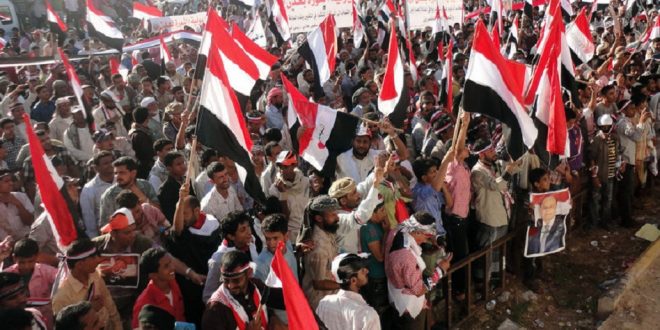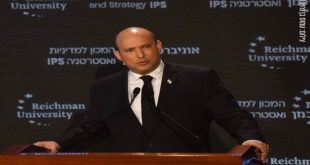Alwaght– Over the past few months, Yemen’s strategic city of Ma’rib as the last stronghold of the forces loyal to the resigned President Abdrabbuh Mansour Hadi has turned into a center of the clashes.
Ansarullah Movement’s forces, who are pushing to deal a painful blow to the invading Saudi-led coalition force due to their lack of commitment to the ceasefire deals and continuation of the airstrikes and inhumane five-year blockade on Yemen, have pushed since earlier this year to liberate the strategically significant city. During this time, they took back Naham district in the capital Sana’a, as well as Al-Hazm as the center of Jawf province, and have made considerable progress in their push to Ma’rib.
According to a report by Lebanon’s Al-Akhbar newspaper, the advances have stalled in the past days as the two sides are swapping prisoners.
Referring to the “unstated” truce around Ma’rib after the exchange of the prisoners by both sides, the paper said that the National Salvation Government in Sana’a that in the past few months opposed the international and regional mediations calling for the cessation of the clashes and advances around the city is now showing some flexibility, though Sana’a clings to implementation of the nine-point initiative offered by Ansarullah leader Abdul-Malik Badreddin al-Houthi and keeping away the city from the consequences of the military choice.
Meanwhile, important news is that sources close to Sana’a administration told Al-Akhbar that negotiations are underway between Ansarullah and the Muslim Brotherhood-affiliated, Hadi-aligned Islah Party that holds the city. Qatar is the interlocutor in these talks.
The sources, predicting that Qatar would likely reopen its embassy in Sana’a to be the second country after Iran, held that Doha tries to persuade Islah leaders to accept the Ansarullah initiative and hence maintain their achievements in Ma’rib.
If this agreement is reached, the Yemeni political and military landscape will change dramatically, with the consequences working like a final nail on the in-coma government of Hadi in Aden and also the situation will go complicated for Saudi Arabia.
Ma’rib strategic position
Ma’rib is located in the center of Yemen and east of the capital Sana’a. The province is surrounded by five provinces or Jawf in the north, Sana’a in the west, Al Bayda and Shabwa in the south, and Hadhramaut in the east. Strategic position, big population, economic resources, and oil and gas reserves make it highly fighting worthy in the battle between Ansarullah and the resigned government. The main oil pipeline carrying Yemeni oil reaches the Ras Isa oil terminal on the Red Sea coast from Ma’rib. Before the war, the province had a population of 411,000 but it increased substantially to around 2.5 million as war-displaced people fled the adjoining provinces.
The province has a rich cultural history, dating back to about 3,000 years. As the capital of the ancient kingdom of Saba, Ma’rib is full of landmarks of the Saba civilization. Ma’rib dam backs to the eighth century B. C. It was also significant in terms of trade, linking the Mediterranean world to the Arabian Peninsula. In addition, it was of religious significance historically, being home to several temples in the pre-Islam period. Awwam Temple is the biggest pre-Islam religion complex in Arabia. Baran Temple was the most spectacular one.
The existence of a large part of Yemeni historical legacy gives a boom to hotels, restaurants, construction companies, and other businesses in Ma’rib compared to other parts of Yemen. When in 2015 Ansarullah took control of Sana’a-based central bank, Ma’rib bank ceased income transfers to the capital and instead gave 20 percent of the oil revenues to Aden, the makeshift capital of the fugitive government.
In March 2015, joint forces of the army and popular committees moved towards the oil-rich Ma’rib. This created gaps among the dominant tribes there while the Islah Party was in control of the province. Jaham tribe, for their religious bonds to the Shiite sect of Zaidiyyah as the official faith of Ansarullah, went divided over whether to fight the movement or welcome its campaign. Many of the tribal leaders, of Murad and Hashemi tribes, backed the Ansarullah campaign, though a major part of the province’s oil-rich areas were held by the Obaideh tribe which is close to Saudi Arabia.
Ma’rib is important also for the Saudis as they already have investments there, including a gas facility construction back in 2007. Ma’rib is also of security importance to the Arab monarchy. It had a crucial military base in the province and in 2015 it warned Hadi that Ansarullah-led forces should not seize the province as it made a “red line” to Riyadh.
Ma’rib and deepening gap with Aden
While Ma’rib remains the key base for Islah forces in Yemen developments and battlefield realities give assurance that in the Ma’rib future Ansarullah will have the superiority, gaps are widening between Islah and the Saudi-backed Hadi government. Islah Party tends to reach a ceasefire with Ansarullah in Ma’rib and perhaps in next moves they would cooperate with the revolutionary movement as the conflict unfolds.
Differences between the UAE-backed southerners in the Hadi government and the Islah Party is clear to all. Also, the party regards Riyadh agreement between Hadi and the southern separatist Southern Transitional Council (STC) as a step to cut the power of influence and role of Islah in the fugitive government. The party went more concerned especially when Hadi after returning from his health care visit to the US in September said he wanted to reshuffle the cabinet.
Saudi Arabia’s decline to openly blast occupation of Socotra Island, another important base for the Islah Party, by the UAE and its Yemeni loyalist militias is another source of worry of the Islah leaders about their marginalization in the future Saudi plans for the country. Some sources said that pessimistic view of the Islah Party intensified by Saudi Arabia in dismissal of General Fahd bin Turkey bin Abdulaziz Al Saud, the commander of the Arab coalition in Yemen.
Sources said that the Saudi general sought to control southern parts of the kingdom and declare separation through a plot with the Brotherhood-affiliated party. The same sources said Saudi Arabian Crown Prince Mohammed bin Salman received information telling him of a scheme to separate Najran, Jizan, and Asir provinces of Saudi Arabia into an independent state with the leadership of Fahd in association with the Brotherhood leaders in Yemen. The sources talked about the cooperation of the veteran Yemeni general Muhsen al-Ahmar, Hadi’s Defense Minister Mohammed Ali al-Maghdeshi, and leaders from Islah Party. Prince Fahd now is imprisoned and the other plotters are now wanted by Saudi Arabia, the sources added.
Certainly, growing differences of Islah with Saudi Arabia and Hadi and the tendency of the party to save political base in the country’s developments via the settlement of disputes with Ansarullah can stand as seal of the annulment of the legitimacy of the resigned government and take out of Riyadh hands the military situation in Yemen.
To subscribe
للآشتراك..
https://chat.whatsapp.com/Fava5Ifru8330dDMfhs0gn
 WILAYAH NEWS VOICE OF THE GLOBAL AWAKENING
WILAYAH NEWS VOICE OF THE GLOBAL AWAKENING






